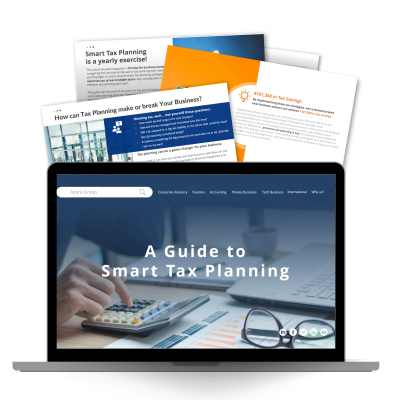Find out more about Business Restructuring
Understanding Business Restructuring
Business restructuring can be a powerful tool to enhance operational efficiency, improve financial health, and achieve long-term business goals.
When done in a tax-efficient manner, business restructuring can significantly reduce tax liabilities and optimise overall tax positions. This page provides an in-depth look at how to restructure your business effectively while maximising tax benefits.
What is Business Restructuring?
Business restructuring involves reorganising the legal, operational, or financial structure of a company. This can include mergers, acquisitions, divestitures, consolidations, spin-offs, or changes in ownership structures. The goal is to improve business performance and align the company's structure with its strategic objectives.
Benefits of Tax-Efficient Business Restructuring
- Reduced Tax Liability: Minimise tax burdens through strategic restructuring.
- Enhanced Cash Flow: Optimise cash flow by reducing immediate tax payments.
- Improved Operational Efficiency: Align the business structure with operational needs for better efficiency.
- Regulatory Compliance: Ensure compliance with tax laws and regulations.
- Increased Shareholder Value: Enhance the overall value of the business for shareholders.
Key Components of Tax-Efficient Business Restructuring
-
Choosing the Right Business Structure
- Evaluate whether a sole trader, partnership, company, trust, or a combination is most tax-efficient.
- Consider the implications of each structure on tax liabilities and benefits. -
Asset and Liability Management
- Assess how assets and liabilities are distributed across the business.
- Optimise the transfer and management of assets to minimise tax impact. -
Capital Gains Tax (CGT) Considerations
- Plan asset sales and acquisitions to benefit from CGT concessions and exemptions.
- Utilise rollover relief to defer CGT liabilities. -
Use of Trusts
- Implement family trusts, unit trusts, or hybrid trusts to distribute income in a tax-efficient manner.
- Consider the implications of trust distributions on beneficiaries. -
Superannuation Strategies
- Utilise superannuation funds to manage wealth and reduce taxable income.
- Plan contributions and withdrawals to maximise tax benefits. -
Debt and Equity Financing
- Structure financing arrangements to balance debt and equity in a tax-efficient way.
- Consider the tax implications of interest payments and dividend distributions.
Strategies for Tax-Efficient Business Restructuring
1. Optimising Business Structure
- Incorporation: Transition from a sole trader or partnership to a company structure to benefit from corporate tax rates and limited liability.
- Holding Company Structure: Create a holding company to manage subsidiaries, allowing for better control and tax optimization.
2. Asset and Liability Transfers
- Intragroup Transfers: Move assets and liabilities within a corporate group to take advantage of tax consolidation rules.
- Asset Revaluation: Revalue assets to reflect current market conditions and optimize depreciation claims.
3. Leveraging Capital Gains Tax (CGT) Concessions
- Small Business CGT Concessions: Utilise concessions available for small businesses, such as the 15-year exemption, retirement exemption, rollover relief, and active asset reduction.
- Rollover Relief: Defer CGT liabilities by reinvesting proceeds from asset sales into similar assets.
4. Implementing Trusts
- Family Trusts: Use family trusts to distribute income among family members in a tax-efficient manner.
- Unit Trusts: Employ unit trusts for joint ventures and investment purposes to separate ownership and income distribution.
5. Superannuation and Retirement Planning
- Contribution Strategies: Maximize concessional and non-concessional contributions to superannuation funds.
- Pension Phase: Transition to pension phase within superannuation to take advantage of tax-free income streams.
6. Effective Use of Debt and Equity
- Debt Financing: Use debt financing to benefit from tax-deductible interest payments.
- Equity Financing: Issue new shares to raise capital without incurring debt.
Common Mistakes in Business Restructuring
- Inadequate Planning: Failing to plan thoroughly can lead to missed tax opportunities and compliance issues.
- Ignoring Tax Implications: Overlooking the tax impact of restructuring decisions can result in unexpected liabilities.
- Poor Record Keeping: Inaccurate records can complicate the restructuring process and lead to compliance problems.
- Neglecting Professional Advice: Failing to seek expert advice can result in suboptimal restructuring outcomes.
Tax-efficient business restructuring is essential for optimizing financial performance and achieving long-term business goals. By understanding the key components and strategies, you can make informed decisions that minimize tax liabilities and enhance overall business value. Always consult with tax professionals to tailor restructuring strategies to your specific needs.
DOWNLOAD GUIDE TO SMART TAX PLANNING
Find out more about smart planning tax strategies by downloading our guide to smart tax planing.
DOWNLOAD NOWSmall Business Restructuring Process
Initial Consultation and Assessment
- Understanding Your Business: Business restructuring starts with understanding your business, its challenges, and your goals.
- Comprehensive Analysis: Conducting a detailed analysis of your financials, operations, and market position.
Strategy Development
- Customised Plan: Developing a tailored restructuring plan that addresses your specific needs and objectives.
- Clear Roadmap: Outlining a clear roadmap with actionable steps and timelines.
Implementation
- Hands-on Support: Working closely with your team to implement the restructuring plan.
- Ongoing Guidance: Providing continuous support and guidance to ensure effective execution.
Monitoring and Adjustment
- Progress Tracking: Monitoring the progress of the restructuring efforts and track key performance indicators.
- Continuous Improvement: Making necessary adjustments to the plan to ensure optimal outcomes.
DOWNLOAD GUIDE TO SMART TAX PLANNING
Find out more about strategic tax planning by downloading our guide to smart tax planning.
DOWNLOAD NOWExpected Outcomes of Small Business Restructuring
Business Structure Optimisation
Income and Expense Management
Investment Planning
Selecting investments that provide tax advantages, such as superannuation funds and tax-free bonds.
Tax Incentives and Credits
Identifying and utilising tax incentives and credits available for specific activities, such as R&D, energy efficiency, and small business concessions.
Succession and Estate Planning
Planning for the transfer of business ownership and wealth to minimise tax impact on successors.
International Tax Considerations
Managing tax obligations for businesses with international operations to optimise global tax efficiency.
Restructuring the Right Way
Effective business restructuring is essential for companies facing financial difficulties, market disruptions, or seeking growth opportunities. Done correctly, restructuring can lead to sustainable improvements in performance and competitiveness. Here's how to approach business restructuring the right way:
1. Understand the Need for Restructuring
Identify the Triggers:
- Financial Distress: Declining revenues, increasing costs, and cash flow issues.
- Market Changes: New competitors, technological advancements, or shifts in customer preferences.
- Strategic Goals: Expansion, mergers, acquisitions, or shifts in business focus.
2. Conduct a Comprehensive Assessment
Financial Analysis:
- Detailed Financial Review: Examine financial statements, cash flow, and debt obligations.
- Profitability Analysis: Identify profitable and underperforming areas of the business.
Operational Review:
- Process Efficiency: Evaluate the efficiency of current processes and workflows.
- Resource Utilisation: Assess the allocation and effectiveness of resources, including personnel, technology, and capital.
Market Position:
- Competitive Analysis: Understand the competitive landscape and your position within it.
- Customer Insights: Gather feedback and insights from customers to identify needs and preferences.
3. Develop a Strategic Restructuring Plan
Set Clear Objectives:
- Define specific goals for the restructuring, such as improving profitability, enhancing efficiency, or positioning for growth.
Customized Solutions:
- Tailor the restructuring plan to address the unique challenges and opportunities of your business.
- Avoid one-size-fits-all approaches and focus on targeted actions.
4. Focus on Smart Cost Management
Identify Essential Costs:
- Good Costs (Muscle): Investments that drive growth, innovation, and competitive advantage.
- Bad Costs (Fat): Unnecessary expenses that do not contribute to the business's strategic goals.
Targeted Reductions:
- Avoid across-the-board cuts. Instead, make strategic reductions that do not hinder future growth.
- Focus on eliminating inefficiencies and optimizing processes.
5. Implement Changes Effectively
Engage Stakeholders:
- Communicate the restructuring plan clearly to all stakeholders, including employees, investors, and customers.
- Involve key stakeholders in the implementation process to ensure buy-in and support.
Project Management:
- Establish a project management framework to oversee the implementation of the restructuring plan.
- Assign responsibilities, set timelines, and monitor progress regularly.
6. Address Underlying Issues
Change Management:
- Identify and address the root causes of inefficiencies and underperformance.
- Implement changes in ways of working, organizational culture, and management practices to support long-term improvement.
Continuous Improvement:
- Create a culture of continuous improvement by regularly reviewing and refining processes.
- Encourage feedback and innovation to adapt to changing market conditions and business needs.
7. Monitor and Adjust
Performance Tracking:
- Establish key performance indicators (KPIs) to measure the success of restructuring efforts.
- Regularly review performance data and adjust the plan as needed to ensure desired outcomes.
Long-Term Sustainability:
- Focus on building a resilient and adaptable business model that can withstand future challenges.
- Invest in capabilities and infrastructure that support long-term growth and competitiveness.
Downloadable Tax Planning resources
The Tax Planning downloadable resources contain information on a range of Tax Planning topics to help you understand the tax planning.
Downloadable Taxation Smart Tips
Talk to our Tax Team
Our team consists of more than 40 professionals, led by experienced Partners from both Big 4, Mid-Tier and boutique, chartered environments with over 100 years' experience. Our team are experts in supporting clients with effective Tax Planning Strategies and reviewing their tax affairs.
CONTACT USGet the latest Tax Planning insights and guidance
The R&D Tax Incentive articles contain information on a range of topics to help you understand the R&D program.
Tax Planning End of Financial Year 2024 Checklist for Businesses
The end of the financial year (EOFY) is an important time for businesses. It’s essential for businesses to start preparing to ensure a smooth transition and to maximise their tax benefits.
By following this checklist, you can ensure that your financial records are accurate, your tax obligations are met, and your business is in a strong position for the year ahead.
TAX PLANNING Smart Timing could Save You Money when Paying Bonuses to Employees
Employee bonuses serve as powerful motivators and rewards for hard work. However, when it comes to paying these bonuses, timing is more than just a logistical consideration — it's a strategic move that can impact both employees and employers. In Australia, understanding the nuances of tax regulations is crucial for making the most of your bonus payouts.
Learn moreSelf-Managed Superfund Beginners Guide to Self-Managed Superfunds (SMSFs)
Embarking on the journey of managing your own financial destiny through a Self-Managed Superfund (SMSF) is both empowering and rewarding. Whether you're navigating the world of superannuation for the first time or considering taking control of your retirement savings, this Beginner's Guide to SMSFs is your compass.
In this guide, we'll unravel the intricacies, offer insights, and provide a roadmap to help you confidently steer your SMSF toward a secure and prosperous future.
R&D Tax Incentive R&D: Should you just worry about record keeping at the end of the Financial Year?
For our final blog post for the R&D month, we focus on best practice record-keeping that ensures a successful R&D claim that will stand up to rigorous audit activity.
Learn moreStrategic Tax Planning Why Tax Planning Strategies are an Integral Part of Business Growth
For many businesses Tax Planning is a topic that comes to mind briefly when the annual tax return is being prepared and maybe again after it has been submitted. It is often a subject that business owners know they need to invest time in but is relegated down the ‘to-do' list as the day-to-day demands of running and growing a business seem to allow no extra time for anything else. However, by the time transactions have taken place or the end of the financial year rolls around, it is too late to begin Tax Planning.
As a society, we are currently wading through the next wave of the Industrial Revolution which will have far reaching impacts to how businesses and society as a whole operate in the future.
Fringe Benefits Tax Festive Celebrations at Work: Christmas Parties and Gifts with FBT in Mind
The holiday season is a time for joy, celebration, and giving. For businesses, it's also a time to navigate the complexities of Fringe Benefits Tax (FBT) when planning Christmas parties and giving gifts to employees. Understanding the implications of FBT can ensure that your festive generosity doesn't come with unexpected tax burdens.
Learn moreR&D Tax Incentive The Most Common Mistakes in R&D Tax Incentive Application and how to Avoid them
Research and Development (R&D) Tax Incentives are a fantastic way for businesses to recoup some of their costs associated with innovation and R&D. However, navigating the R&D Tax Incentive application process can be tricky, and many companies fall into common traps that hinder their chances of securing the deserved benefits.
Learn moreEstate Planning 9 Benefits of Having an Estate Plan
A disorganised estate can leave a major burden on your loved ones. Without a valid Estate Plan, assets may fall into the wrong hands or get tied up in the court system, and you may end up significantly reducing the value of the estate by paying far more than you need to in taxes and legal fees.
While no one likes to think about dying, it is important to plan ahead to protect your family when they need it most. If you do not yet have Estate Plan in place, this article will outline the benefits of establishing one and how a professional accountant can help reduce tax obligations for your beneficiaries.
Self-Managed Superfund Steps to Setting up Self-Managed Superfund (SMSF)
Setting up a Self-Managed Superannuation Fund (SMSF) is a significant financial decision that offers you greater control and flexibility over your retirement savings. While it provides opportunities for strategic investment and tailored financial planning, it also comes with important responsibilities and regulatory requirements.
Setting up a Self-Managed Superannuation Fund (SMSF) involves several steps. Below you can find a general guide, but keep in mind that seeking professional advice is crucial for your specific situation.
Self-Managed Superfund Why Accurate SMSF Record-Keeping is Super Important
Self-Managed Super Funds (SMSFs) offer individuals more control and flexibility over their retirement savings. However, with great power comes great responsibility, and one of the critical aspects of SMSF management is diligent record-keeping.
In this article, we will explore SMSF record-keeping requirements, the types of records that must be maintained, and for how long. Whether you are already managing an existing SMSF or looking for advice for setting up an SMSF, understanding these crucial aspects is paramount to ensuring compliance with the Australian Taxation Office (ATO) and maximising your retirement balance.ucture.
Fringe Benefits Tax Fringe Benefits Tax (FBT) Checklist
The Fringe Benefits Tax (FBT) year will come to an end on 31 March. If you have provided any fringe benefits to your employees during the year, your business may be liable for the fringe benefits tax.
Learn moreTax Preparation and Tax Planning Now is a Good Time to Start Tax Preparation and Year End Tax Planning
As we are quickly approaching the end of financial year, now is a good time to start tax preparation and have a look at both your expected taxable income for the current financial year and your projected taxable income for the next financial year as they will help guide your Tax Planning Strategy.
Have you ever heard the saying, ‘A stitch in time saves nine’? The same philosophy holds true for tax planning. It should be started as early as possible so that you are not in a rush at EOFY time.













